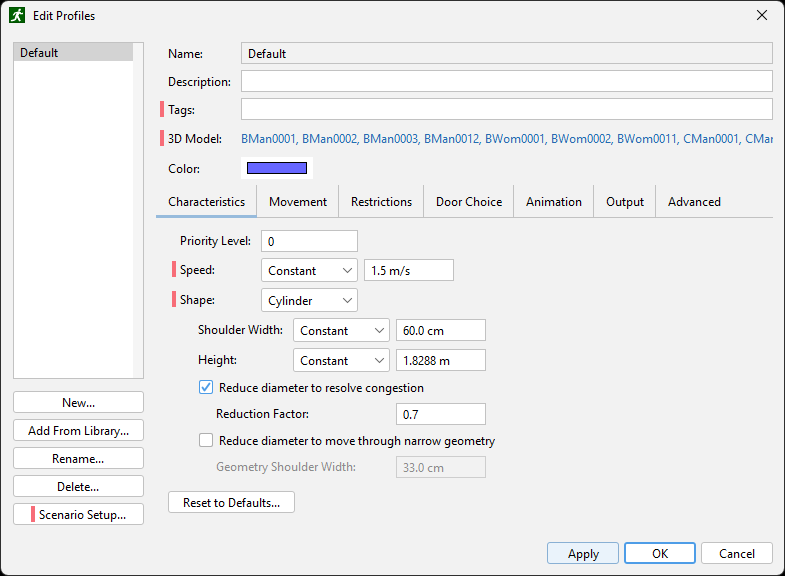PyroSim, Pathfinder, and Ventus 2024.2 - Available Now
We're proud to announce the arrival of 2024.2 versions of all Thunderhead products. This release enhances modeling capabilities in PyroSim, Pathfinder and Ventus. PyroSim 2024.2 enhances the ability to use devices with activation logic as inputs for other controls. Pathfinder 2024.2 adds scenarios, allowing for one model to contain multiple variations of a model. Finally, Ventus 2024.2 improves on transient simulation analysis.
PyroSim Controls as Inputs to Controls and Improved Statistics Devices
Previous versions of PyroSim allowed the use of devices with setpoints or devices that had some inherent activation logic (ex. smoke/beam/heat detectors, etc.), as inputs to Controls within the PyroSim UI. This functionality as been expanded to also allow for controls to be used as inputs to other controls. This improvement to the UI will make it easier to create more deeply nested control patterns, where hundreds or thousands of devices can be used to bubble up activation state to a single control output. The primary use case for nested controls are situations where there is a need to detect activation in a large network of sensors. FDS currently has a limit of 40 inputs to a single control. To sense the state of more than 40, groups of devices are assigned to different controls. The output of those controls can now be inputs to higher level controls and so on until all devices in the system are accounted for and at the top of the hierarchy the user can use that single control output for activation/deactivation of things like exhaust/supply vents, HVAC dampers, fans, etc.


Within the context of improved devices and controls, the 'Statistics' device UI has been changed to allow for new independent devices to include statistical output data. In past versions of PyroSim there was an effort to simplify the input process and make a single statistics object create multiple FDS devices for various statistical quantities by clicking checkboxes for the desired output. While this could save a little time creating devices, it did not allow for the flexibility that many users required. In addition, there wasn't a way to use a setpoint on a statistics device for use in activation logic or controls. This release of PyroSim resolves both of those issues by allowing statistics devices to be defined like any other independent device, with additional options for temporal and spatial outputs for the device quantity.

Read about these new features on the 2024.2 PyroSim Release Notes page.
Pathfinder Scenarios
When creating pedestrian movement or evacuation models, you will often desire to create multiple different configurations of a single model. These configurations often involve changes to Occupants or geometry. You might be interested in how Occupants would react to different influences, how changing geometry might affect the flow of Occupants, or what effects changing a Profile property had on Occupant movement. In prior versions of Pathfinder, you would have to make separate model files to investigate each of these configuration changes, adding unnecessary work and increasing file management overhead. Pathfinder 2024.2 simplifies this process with the introduction of Scenarios.
Pathfinder Scenarios allows you to create different configurations of a model within a single model file. With Scenarios, you can manage things like geometry changes, profile parameters, Occupant position, and much more.

Pathfinder Scenarios also provides quick visual indications of Scenario changes with color-coded UI elements and a high-level overview of changes for each Scenario.


Read about these new features on the 2024.2 Pathfinder Release Notes page.
Ventus Improved Transient Simulation Support
New features of the Ventus release improve the capabilities to calculate tenability within our GUI and create transient reports. These features include: transient CONTAM simulations with scheduled flowpath multipliers AND AHS supply/return, time-plots for transient flows, and added graphics to quickly determine external vs internal flowpath. These tools will enhance door-opening and HVAC interaction modelling in Ventus and streamline PBD.


Read about these new features on the 2024.2 Ventus Release Notes page.